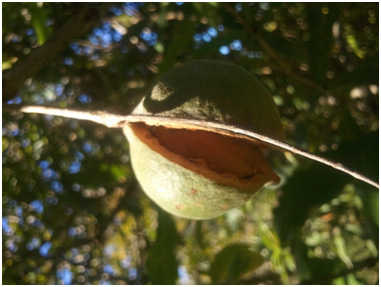 News
Articles & Recipes
Articles
Help, My Oil Is Going Off!
News
Articles & Recipes
Articles
Help, My Oil Is Going Off!
Help, My Oil Is Going Off!
Oxidation / Anti-Oxidants and Free Radicals.
In our 'anti-ageing' obsessed world the above terms are impossible to avoid as we all seek active skincare that helps us 'fight off free radicals' etc. But free radicals and oxidation are not just things that speed up the ageing of our skin they also prematurely age our skin care ingredients, well, some more than others and when they do, the chemistry of your whole product changes shortening your products shelf life.
Oxidation reactions in a vegetable oil start when it comes in contact with oxygen from the air and continue until there is no more oxygen left in the product or no more sites in the oil to react with. The speed and impact of these reactions varies depending on your packaging, the oil chemistry and the presence or absence of additional anti-oxidants and as such there is no 'one-size-fits-all' way of solving this problem.
In this article we will look at how the chemical structure of the oil affects its stability.

How stable is my oil naturally?
To illustrate this we will do some simplified oil chemistry. If you are interested in reading more you will find little nuances and additional factors that come into play but in general these rules form the basics of stability.
Vegetable oils are mainly made up of triglycerides which in turn are made up of fatty acids and glycerin. Fatty acids can be organized into three families:
- Saturated (no double bonds = nowhere for oxygen to get in)
- Monounsaturated (one double bond = one place for oxygen to get in)
- Polyunsaturated (more than one double bond = potentially many places for oxygen to get in)
It is common for vegetable oils to contain MANY different fatty acids in their mix and in general the oils containing a high percentage of polyunsaturated fatty acids have the shortest shelf life.
Examples:
Saturated:
- Stearic Acid
- Palmitic Acid
- Castor wax (hydrogenated castor oil)
Monounsaturated:
- Oleic Acid (found in olive oil, canola oil, macadamia nut oil, grapeseed, peanut, almond, sunflower)
Polyunsaturated:
- Linoleic
- Linolenic
- Omega Fatty Acids
Based on the fatty acid composition of our oils we could assume the following in terms of long-term stability:
| Most Stable | MCT Oil (Caprylic/Capric Triglyceride) Coconut oil Olive Oil Palm Oil |
| Medium Stability | Almond Oil Cocoa Butter Jojoba Oil Macadamia Nut Oil Shea Nut Butter |
| Least Stable | Canola Oil Cottonseed Oil Grape Seed Oil Sesame Seed oil Safflower oil |
If we dig a bit deeper we see that Coconut Oil typically consists of the following fatty acids:
- 83% Saturated Fats
- 6% Mono-Unsaturated Fats
- 2% Polyunsaturated Fats
And we see that Grapeseed Oil typically consists of the following:
- 12% Saturated Fats
- 15% Mono-Unsaturated Fats
- 73% Polyunsaturated Fats
So, the higher the level of unsaturation, the more unstable the oil becomes.
More and more we are looking for cosmetic ingredients that are good enough to eat and when it comes to edible oils and fats unsaturated oils are much better for our health than the saturated fats typically found in beef tallow, butterfat (goat) or coconut. However, as we have just seen above unsaturated oils are less stable so we have a problem!
Improving your chances of success
There are a few ways to get all of the benefits from the highly active but chemically less-stable vegetable oils while keeping oxidation at bay. Here are our top tips.
- Choose the most stable vegetable oil possible for your base. This will give you a solid basis from which to work
- Use oxidation-prone oils in smaller quantities as feature oils or actives.
- Check the chemistry of each ingredient that you use to avoid over-loading your product with oxidation-prone oils and actives – remember that vitamins are also oxidation prone!
- Using a manufactured oily ester such as caprylic/ capric triglyceride as a base may also help as while these are still 100% natural they have been manufactured to a tighter specification to improve stability and re-predictability.
- Buy, store or retail your oils in smaller pack sizes to help keep them fresh.
- Add an anti-oxidant such as natural vitamin E (tocopherol), Olive or rosemary extract or BHT (synthetic) to boost your blends ability to fight off oxidation. However, be aware that there is mounting evidence to show that over-dosing on antioxidants is as bad as having none at all and you may end up speeding up oxidation – we will cover this in another article.
- Choose airless packaging if you think you is likely to have a problem.
- Have your product tested at a laboratory to see how stable it is both in terms of general stability and oxidative stability.
- Storing your oils in the fridge and away from direct sunlight is always a good idea but as the largest factor in oxidative stability is oxygen, air-tight containers are the best bet!
- Buy from a reputable supplier.
Have fun with your oils and remember that even the most oxidatively un-stable of oils still have a shelf-life in excess of one year under most circumstances so with careful handling and good manufacturing processes your blends should be able to go the distance.
Amanda Foxon-Hill
4 July 2012
